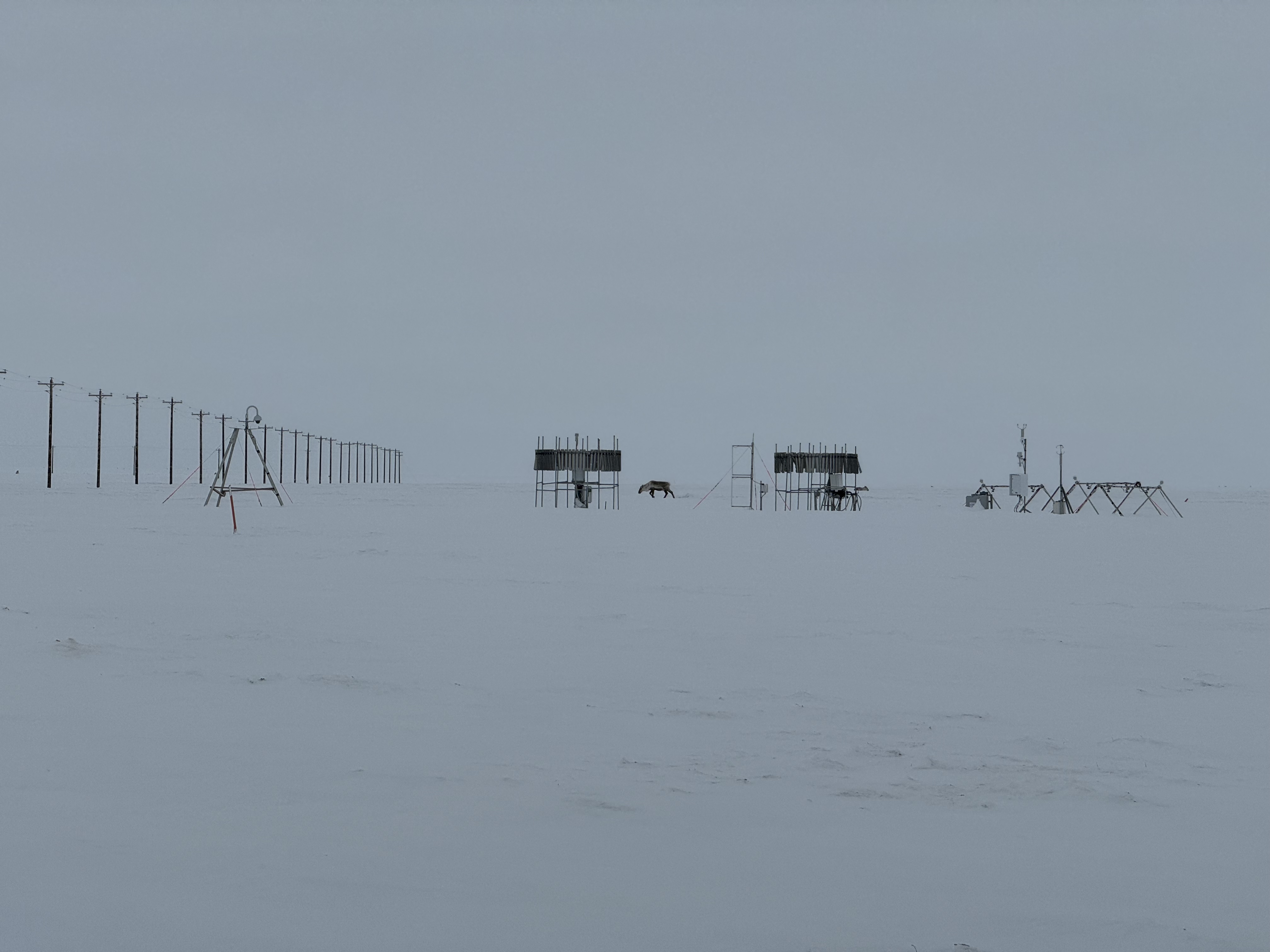Snow ALbedo eVOlution (SALVO) at NSA: Spatial Scaling Across Tundra Landforms
Authors
Jennifer S. Delamere — University of Alaska Fairbanks *
Matthew Sturm — University of Alaska Fairbanks
Phillip Raymond Wilson — University of Alaska Fairbanks
Marc Oggier — University of Alaska Fairbanks
Serina M Wesen — University of Alaska, Fairbanks
David Clemens-Sewall — NOAA Physical Sciences Laboratory
Zachary Espinosa — University of Washington
David Shean — University of Washington
Melinda Webster — University of Washington
Don Perovich — Dartmouth College
Category
ARM field campaigns – Results from recent ARM field campaigns
Description
The SALVO team made albedo measurements (n > 900) across the tundra near Utqiagvik (formerly Barrow), Alaska, during the 2019, 2022, and 2024 snowmelt seasons. Coincident in time and space, aerial photos were collected and compiled into orthomosaic images of the same landscapes. Hundreds of snow and liquid water depth measurements were made as well. The three melt seasons spanned different lengths, with the full exposure of bare tundra taking from days to nearly a month. Winter broadband albedo values averaged around 0.85. As melt commenced in 2024, the broadband albedos across the still snow-covered landscape decayed less than 10% due to snow grain-coarsening and wetting. When tundra patches finally emerged, a rapid decline in broadband albedo commenced, reaching a minimum of 0.16 for dry tundra, with wet tundra with ponded water slightly lower. A linear albedo mixing model based on the orthomosaic imagery matches the extensive albedo measurements well; the mixing model allows us to compute albedo values over larger landscape domains than those encompassed by our direct measurements. Over larger domains (order 2 km), we observed local areas, some exceeding 30 hectares in size, with albedo decay trajectories that were advanced or retarded by several weeks from the domain mean. We explore in this presentation how melt processes, which occur initially at snow grain and snowpack scales (Pinzner et al., 2024), ramify to progressively larger scale lengths to produce the varied albedo and melt trajectories we observed. We also explore how weather forecast models and reanalysis products simulated the evolution of albedo, revealing important differences between models and observations.
Pinzner, A., Sturm, M., Delamere, J. S., & Mahoney, A. R. (2024). An examination of water-related melt processes in Arctic snow on tundra and sea ice. Water Resources Research, 60, e2022WR033440. https://doi.org/10.1029/2022WR033440
Lead PI
Jennifer S. Delamere — University of Alaska Fairbanks


